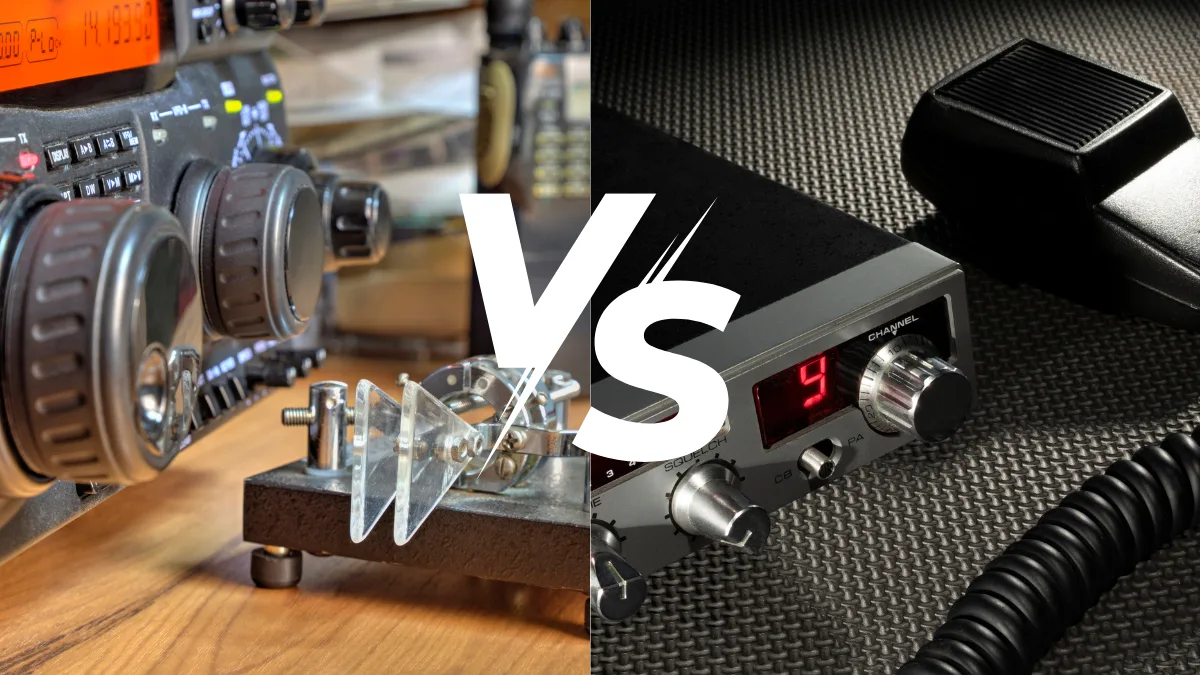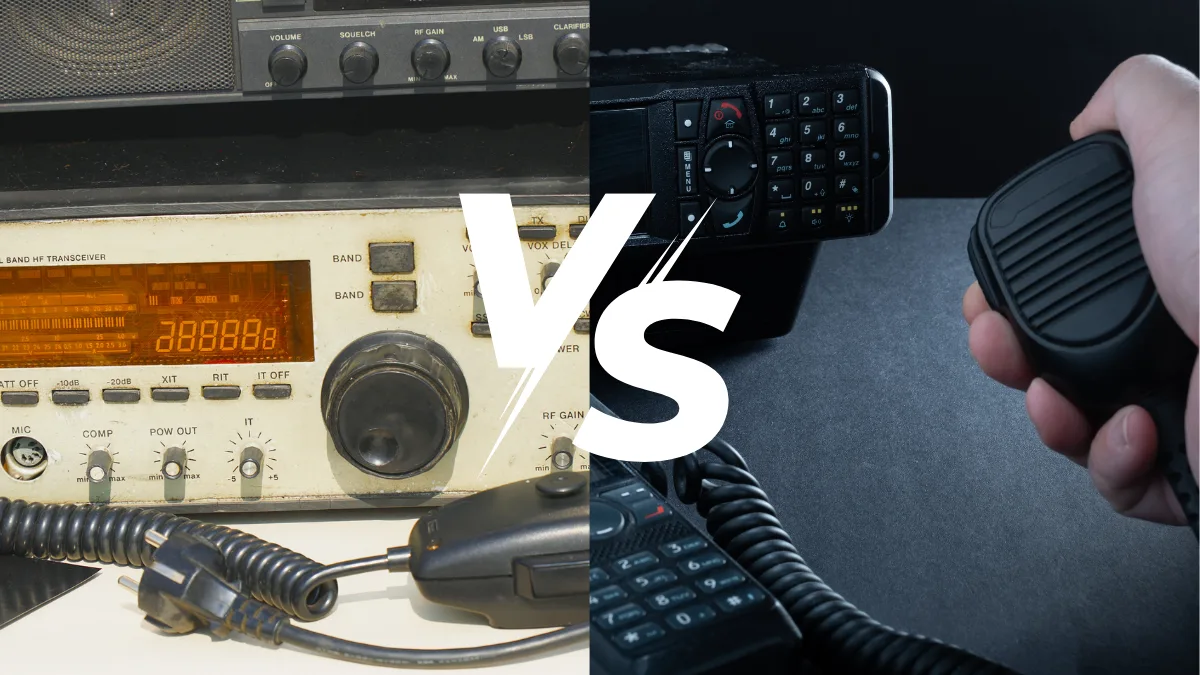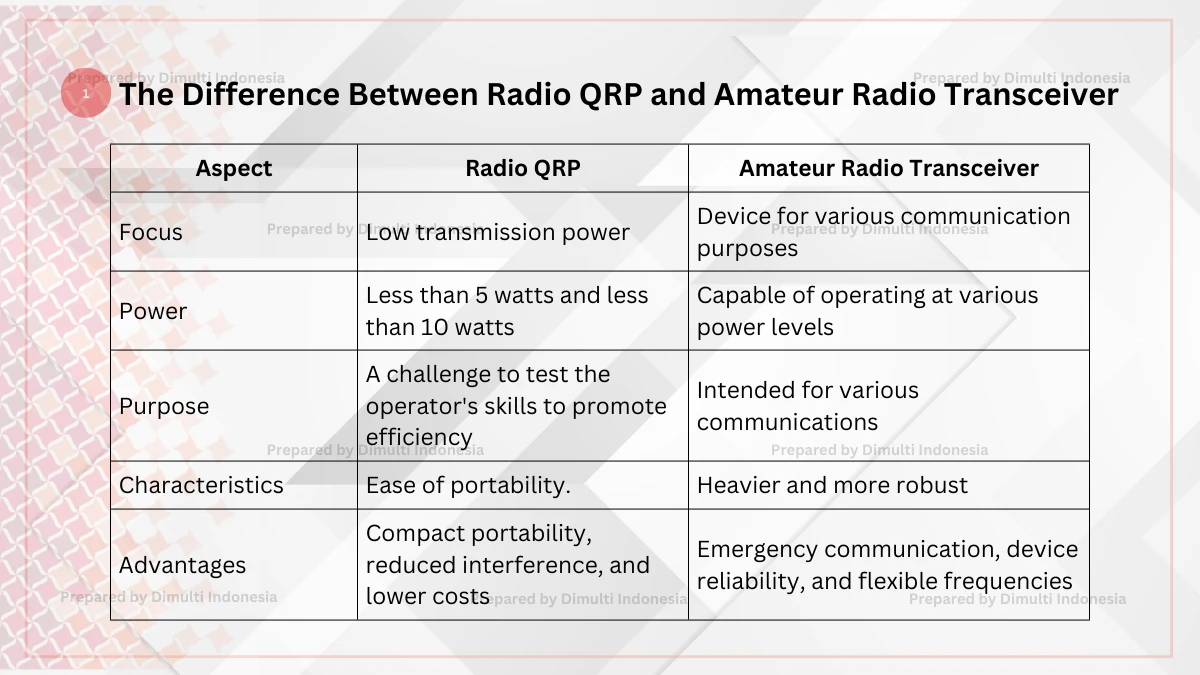A radio QRP and an amateur radio transceiver are the keys to being used for two-way communication in emergencies. Although both maximize emergency communication, radio QRP and amateur radio transceivers have some significant differences.
The differences between radio QRP and amateur radio transceivers include focus, power, goals, characteristics, and advantages.
This article will delve into the important differences between radio QRP and amateur radio transceivers for emergency communication.
What is a Radio QRP?

An amateur radio transceiver is a single electronic device that combines the functions of a transmitter and a receiver. This device allows users to send and receive radio signals simultaneously.
The transmitter converts audio signals into radio waves that are transmitted through the antenna. The receiver, on the other hand, receives radio waves from the antenna and converts them back into audio signals.
The transceiver is the most important device in an amateur radio station, as communication would not be possible without it.
What is a Radio Transceiver?

Radio RQP is a term in the world of amateur radio that refers to the use of very low-power transmitters.
The use of such equipment typically does not exceed 5 watts for Morse code (CW) or data modes, and 10 watts for voice modes (SSB).
QRP originates from the Q code used in radio communication, which signifies a request to reduce power.
The use of this radio aims to maximize range while addressing technical challenges related to portability and self-assembly of equipment.
The Difference Between Radio QRP and Amateur Radio Transceivers

A radio QRP and an amateur radio transceiver are both used for two-way communication in emergencies, but they have some differences. Here are five differences between radio QRP and amateur radio transceiver:
1. Focus
Radio QRP: An amateur radio operation with low transmission power.
Amateur radio transceiver: A device for various communication purposes in a single transmitter and receiver unit.
2. Power
Radio QRP: Less than 5 watts for Morse code (CW) communication, and less than 10 watts for single sideband (SSB) mode.
Amateur radio transceiver: Capable of operating at various power levels, ranging from the lowest power for QRP to high power exceeding 100 watts.
3. Purpose
Radio QRP: As a challenge to test the operator's skills in long-distance communication with minimal power, and to promote efficiency.
Amateur radio transceiver: Intended for various communications, from personal communication to emergency communication.
4. Characteristics
Radio QRP: Designed to be small and lightweight for ease of portability.
Amateur radio transceiver: Heavier and more robust compared to QRP transceivers.
5. Advantages
Radio QRP: Compact portability, reduced interference, satisfaction from the challenge, and lower costs.
Amateur radio transceiver: Emergency communication, device reliability, flexible frequencies, and as an experimental device.
That’s the difference between radio QRP and amateur radio transceiver that you can consider when choosing according to your personal needs.
If you want to try experimenting with low-power long-distance communication, a radio QRP is a good choice. However, if you need an amateur radio transceiver that covers various types of communication, including QRP, you can choose an amateur radio transceiver.